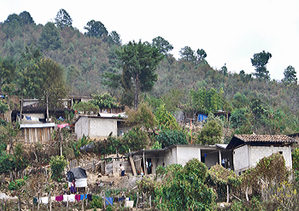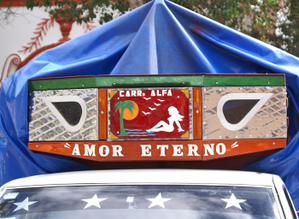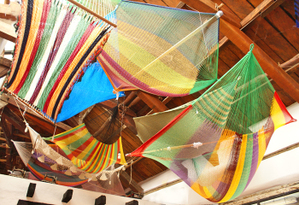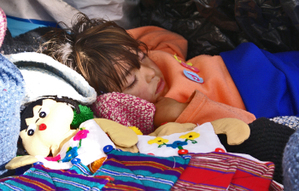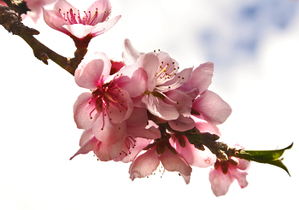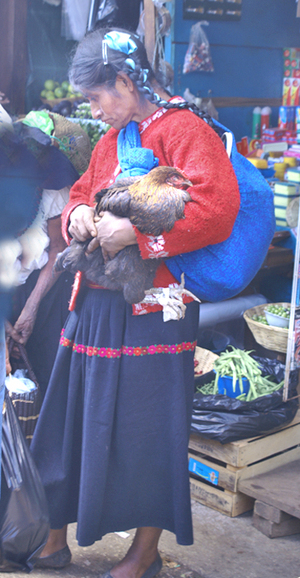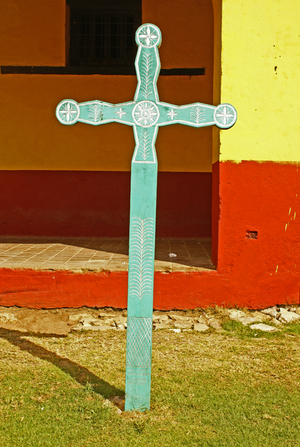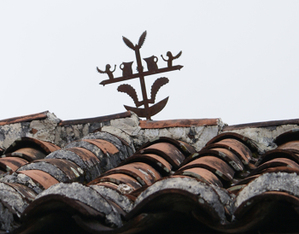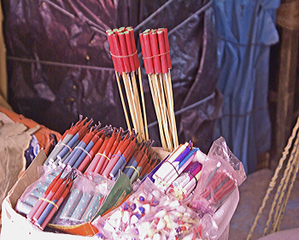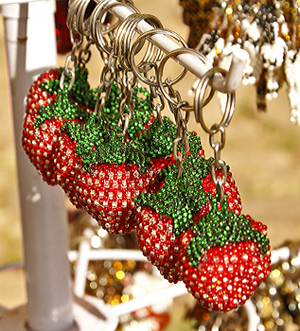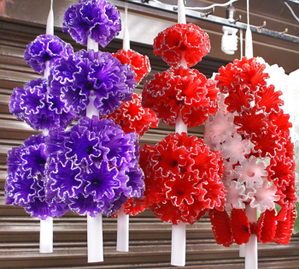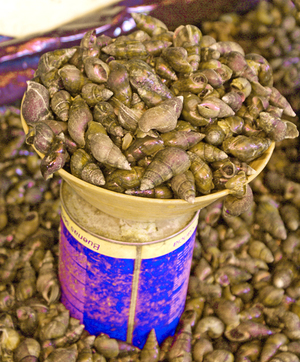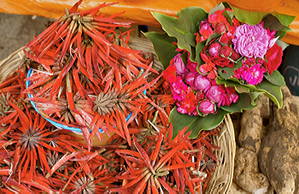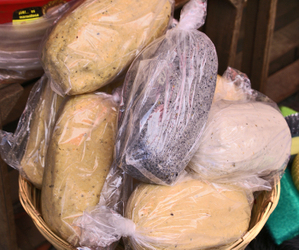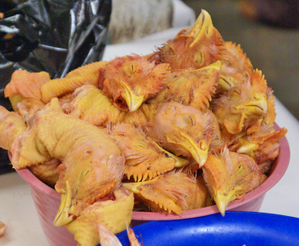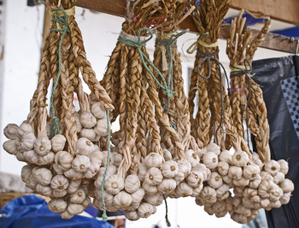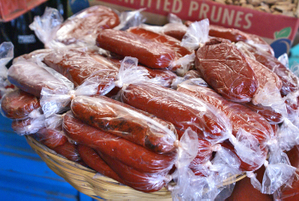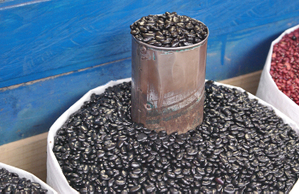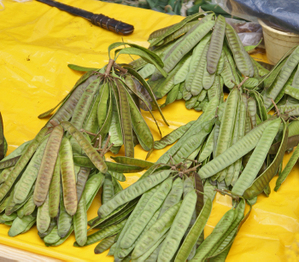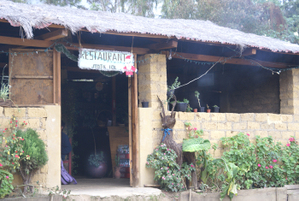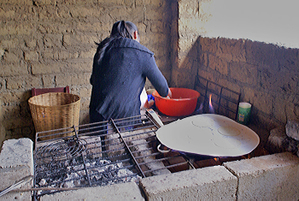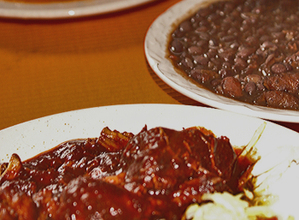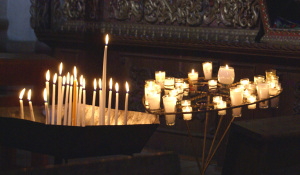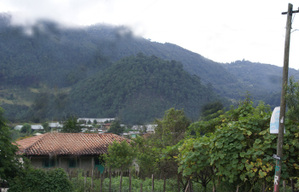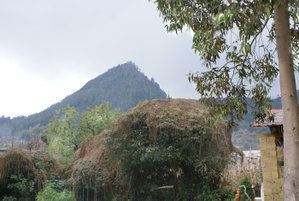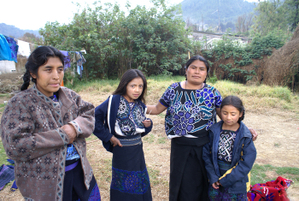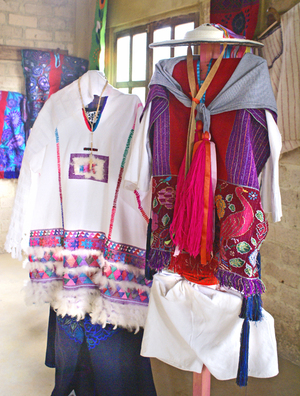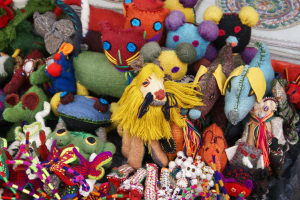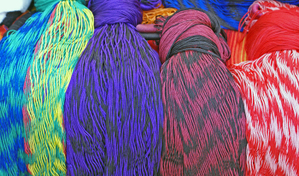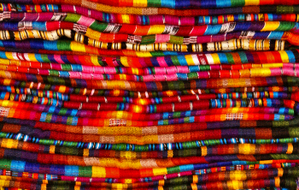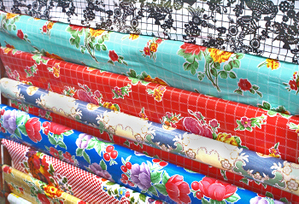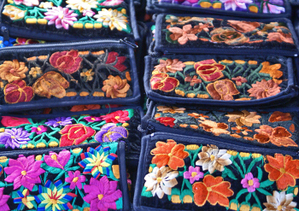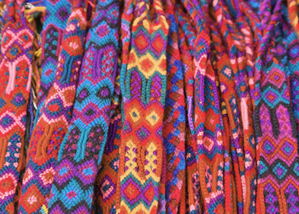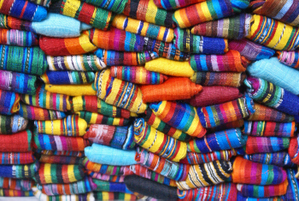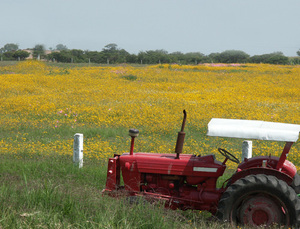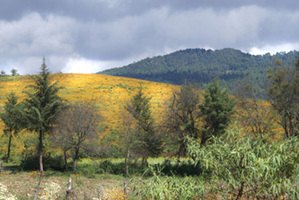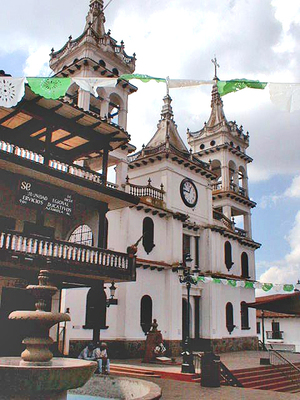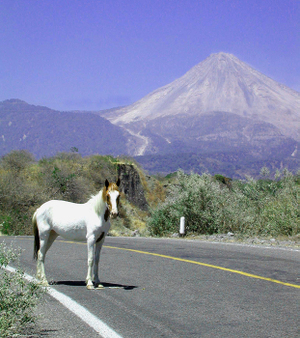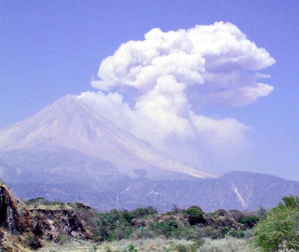Two or three days after our trip to Zinacantán, we wound our way through the streets of San Cristóbal de las Casas and took the highway south toward Comitán de Domínguez, bound for Amatenango del Valle, a town of 6,000 inhabitants. Amatenango’s language is Tzeltal, although the name of the town is Nauhatl for "fortified place of the fig trees". Its women wear the town’s traditional red and yellow huipil (blouse). The town square, dominated by the peak-roofed 18th Century Templo de San Francisco de Asís, is surrounded by steep 6600-foot hillsides.
The artesanía in Amatenango is pottery, created by women. As we approached the town, we saw roadside stands filled with clay pots, clay animals, and clay doves lining both sides of the highway. Women dressed in Amatenango’s ropa típica painted fresh clay vessels while they waited for customers.
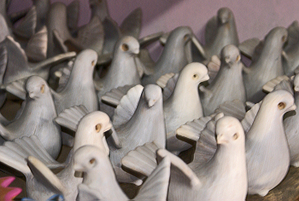
Las palomas (doves) are the most common Amatenango clay figure. The birds are finished in a technique called bruñido (burnishing).
Clay for making the pots comes from hillside locations several hours on foot from the center of town. Hard oak firewood for firing the pots comes from the high hills, brought down in a wild go-cart ride to the potters’ homes. Most women of the town dedicate themselves to creating pots, and most begin their clay work in early childhood. Many Amatenango women have no memory of their lives before they began to make pots.
The women of Amatenango fire their clay goods in pre-Hispanic bonfire kilns, one of the world’s oldest firing methods. Pots are fired in the open air with firewood stacked all around and over the clay.
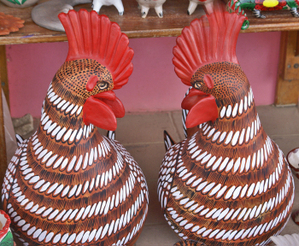
Painted gallinas de barro (clay hens) are nearly as numerous as las palomas.
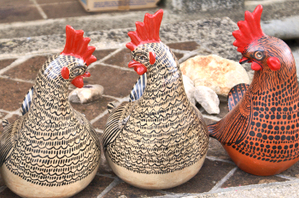
The hens are distinctive and differ from artist to artist.
Juana Gómez learned pottery-making by observing her relatives working
with clay. Arguably the most gifted potter in today’s Amatenango, her
work ranges from intricately designed small jugs to her current work,
monumental jaguar sculptures.
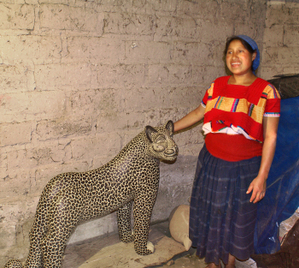
Juana Gómez Ramírez with one of her nearly complete, monumental jaguares de barro (clay jaguars).
Juana showed me around her small property and the firing lot just beyond her one-room cement block studio. On the bare ground of the firing lot, she had constructed a wrought iron stand for balancing the life-size jaguar figures. "Their legs and bodies are hollow," Juana said, "so they are very fragile. You can see the holes in their legs and in their stomachs, where the fire goes through them. Firing them inside and out makes them very dry and sturdy, although they’re clay and can’t take a lot of abuse. My uncle used to make jaguares this size, but the legs of his were solid, not hollow like mine, and they didn’t fire all the way through. A lot of his jaguares broke in the kiln. Mine don’t."
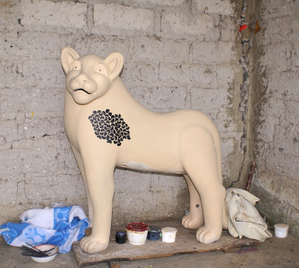
The second of Juana’s latest pair of jaguares. She has just started painting the spots of the big cat.
Like the other Amatenango potters, Juana fires her pots and jaguares in the open air. "First the jaguar has to dry. Then I pile the wood under and over and around the figure and then burn the whole pile. It takes hours to burn, and the oak burns so hot. But I have to be careful that the fire is hot enough to bake the jaguar, but not too hot to burn it."
We ordered two pots from Juana Gómez Ramírez and reluctantly left her workshop. Once again we turned the car to the south, toward Aguacatenango, where we hoped to meet a rug weaver. As we came down from the hills into view of the town, our traveling companion gave us a bit of information about Aguacatenango. A Tzotzil-speaking village well-known for its cottage industry textiles, Aguacatenango politically casts its lot with EZLN (Ejército Zapatista de Liberación Nacional), the Zapatista revolutionaries whose front-man is known as Sub-Comandante Marcos. In Aguacatenango, no photos are permitted due to politics rather than, as is the case in San Juan Chamula and Zinacantán, religion.
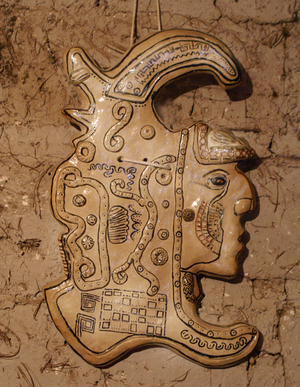
Máscara de barro (clay mask) of a Mayan god, Juana Gómez Ramírez, 2008.
The rug weaver wasn’t at home and we left Aguacatenango to return to San Cristóbal de las Casas.
